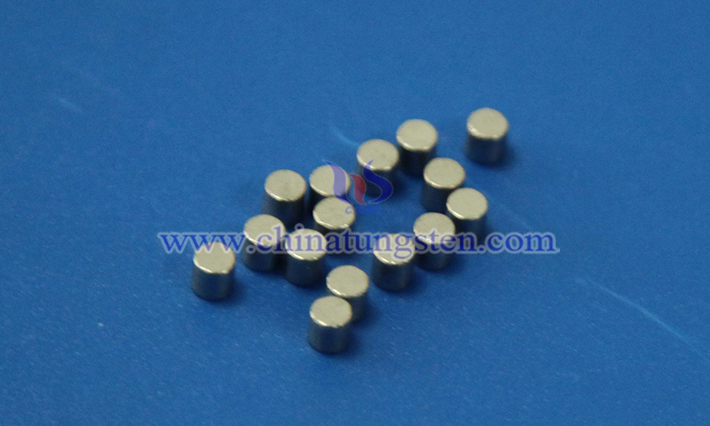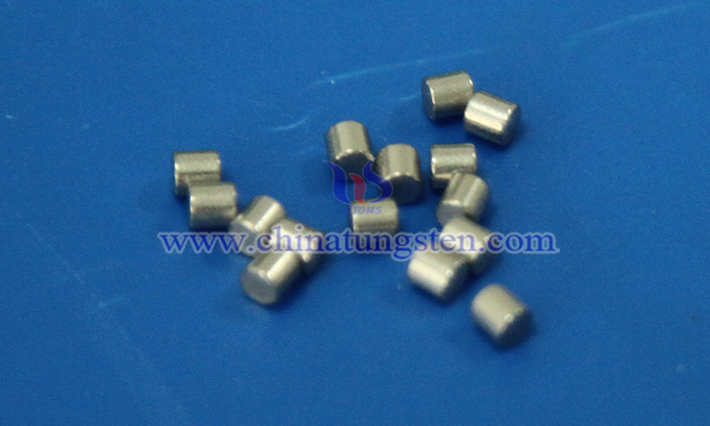Barium Tungsten Electrodes in Ion Lasers
- Details
- Category: Tungsten Information
- Published on Sunday, 27 April 2025 18:40

Ion lasers utilize barium tungsten electrodes because they provide a stable electron flow to sustain gas discharge while offering advantages such as low work function, high-temperature stability, and long lifespan. These characteristics collectively ensure the efficient output and stable operation of ion lasers, making barium tungsten electrodes an ideal choice.
Barium Tungsten Electrodes for Lasers
- Details
- Category: Tungsten Information
- Published on Sunday, 27 April 2025 18:38

Barium tungsten electrodes are widely used in lasers, particularly excelling in gas-discharge lasers. Their core advantages lie in high electron emission performance, high-temperature resistance, and long operational lifespan.
Barium Tungsten Electrode for Stroboscopic Tachometers
- Details
- Category: Tungsten Information
- Published on Sunday, 27 April 2025 18:36

The barium tungsten electrode is a composite electrode material made from tungsten and barium, playing a critical role in stroboscopic tachometers due to its unique physical and chemical properties.
Barium Tungsten Electrode for Electronic Monitoring
- Details
- Category: Tungsten Information
- Published on Sunday, 27 April 2025 18:34

The barium tungsten electrode for electronic monitoring is a specialized electrode material primarily used in sensors or detectors within electronic monitoring devices. This electrode ingeniously combines the properties of tungsten and barium to meet the high-performance material requirements of electronic monitoring systems.
Barium Tungsten Electrodes for Sports Venues
- Details
- Category: Tungsten Information
- Published on Sunday, 27 April 2025 18:32

The application of barium tungsten electrodes in sports venues primarily lies in their role as core materials for specialized light sources such as High-Intensity Discharge (HID) lamps and strobe lights, providing efficient, stable, and energy-saving lighting solutions for venues.
Barium Tungsten Electrodes for Industrial Lighting
- Details
- Category: Tungsten Information
- Published on Sunday, 27 April 2025 18:30

Barium tungsten electrodes used in industrial lighting typically refer to the core components in discharge lamps, such as high-intensity discharge (HID) lamps. These electrodes are primarily made of tungsten due to its extremely high melting point (approximately 3422°C) and excellent high-temperature resistance, enabling it to withstand elevated temperatures during lamp operation. These properties make tungsten an ideal choice for electrode materials in industrial lighting, particularly in discharge lamps that require the generation of bright arcs.
Barium Tungsten Electrodes for Road Lighting
- Details
- Category: Tungsten Information
- Published on Sunday, 27 April 2025 18:28

High-intensity discharge (HID) lamps commonly used in road lighting, such as high-pressure sodium (HPS) lamps and metal halide (MH) lamps, typically employ barium tungsten electrodes (or barium tungsten cathodes) as electron-emitting materials. These electrodes exhibit outstanding performance under high-temperature and high-current conditions, serving as a critical component to ensure the efficient and stable operation of lighting systems.
Barium Tungsten Electrodes for Fluorescent Lamps
- Details
- Category: Tungsten Information
- Published on Sunday, 27 April 2025 18:05

Leveraging unique material design, barium tungsten electrodes have overcome the challenges of slow ignition and short lifespan in fluorescent lamps, becoming an ideal choice for high-frequency strobe and high-brightness applications. Their exceptional performance stems from innovative manufacturing processes and material properties, delivering significant breakthroughs for the lighting industry.
Barium Tungsten Electrodes for Stage Lights
- Details
- Category: Tungsten Information
- Published on Sunday, 27 April 2025 18:02

Stage lights play a crucial role in performances, not only illuminating the stage but also creating various atmospheres and effects. Among these lighting fixtures, barium tungsten electrodes are an important technical detail. So, why do stage lights use barium tungsten electrodes?
Barium Tungsten Electrodes for Strobe Lamps
- Details
- Category: Tungsten Information
- Published on Friday, 25 April 2025 17:46

Barium-tungsten electrodes, with their low work function, high thermionic emission performance, and resistance to high temperatures and corrosion, are an ideal choice for achieving rapid ignition, high-frequency stable discharge, and high-brightness output in strobe lamps.



 sales@chinatungsten.com
sales@chinatungsten.com